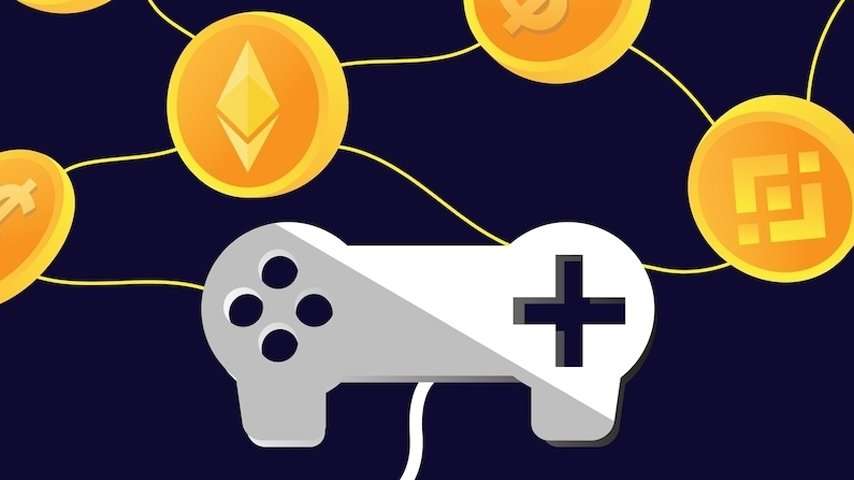Imagine being paid to play games on the internet. Sounds like a dream, right? Well, that’s where play-to-earn (P2E) games come in! With the bold ambition of making gaming a sustainable livelihood, P2E games usher in a completely new age.
For the benefit of the readers, this article will be structured into the following parts:
- Why do traditional internet games’ business models suck?
- Introduction to P2E games’ business models
- How do you identify games for sustainable revenue?
- Closing Thoughts
With that, let’s get right into it.
Why do traditional internet games’ business models suck?
The first-ever computer game was developed back in 1939. It was Nimtron and a two-player mathematical game demonstrated in the 1939-40 edition of The World’s Fair. And it was not until 1973 that we found our first multiplayer game in Empire. Then in 1975 came Gunfight, which brought online gaming to households. From here on, there was no looking back. The games only got better in terms of graphics and experience. The next couple of decades saw online games transition from the likes of Runescape to Call of Duty and Clash of Clans.
However, there hasn’t been any significant shift on their business front. Predominantly, most games as of today follow either one of these two business models:
- Pay-to-Play Model: Under this model, the developers charge players for downloading their games. This model was the industry-best and held dominion until the rise of the free-to-play model.
- Free-to-Play Model: Under this model, the developers do not charge players any fees for downloading their games. Instead, they branched into other revenue streams such as advertisements and in-app purchases like upgrades, special abilities, unique items, and expansion packs.
A common issue that runs through these models is their direct lack of real-world value for players. Though indeed, this industry has successfully minted many new-age millionaires in gamers, the fact remains that a good chunk of their earnings is driven by advertisements/marketing and not the game economy itself. Consequently, most game folks are not fairly compensated for their contribution to the ecosystem. Add to this list the divide created by these models. Wealthy players naturally have the edge over the rest as they are more willing to buy in-game items to boost their performance. This ruins the UX for the other gamers.
Introduction to P2E Games’ Business Models
As the name suggests, P2E games are based on the play-to-earn business model. So essentially, it is about creating a direct source of revenue for gamers contributing to the game by being active on it. At its core, there are two critical value-adds of this:
- Direct Monetary Sources: In the traditional gaming ecosystem, the dominant way for gamers to earn money is via marketing/advertising. Gamers fail to establish a direct monetary relationship with the game ecosystem itself. For example, when streamers play Fortnite, it’s not like Epic Games directly is paying them for their contribution. Instead, it’s the advertisers paying to get their ads on. In the long run, this runs contrary to UX experience. So, P2E games have devised a new model where the ecosystem captures value and transfers it to the players according to their contribution.
- Better UX: A game studio has to spend an astronomical sum on marketing to ensure its visibility amongst players. But a play-to-earn game does not need to do that, as players normally flock to it by word of mouth because of the real-world value on offer. This allows the game studios to allocate more funds toward the game’s development.
- Asset-Ownership for Players: One of the most significant issues with online games is the lack of ownership. Your super rare skin on Valorant is only limited to the game ecosystem. With the help of NFTs, P2E games allow players to own in-game assets in real life and drive monetary value from them. Play-to-earn model provides players ownership over their in-game purchases with the help of NFTs and enables players to generate revenue from these items.
How do you identify games for sustainable revenue?
To understand this, we need to appreciate that P2E games reward their players in native tokens. This opens up a significant vulnerability: token price inflation. If the game starts minting too much of their token without any corresponding increase in value capture, then the token price will considerably decline. This has been the case with many games in the past. Axie Infinity, for example, suffers from this issue a lot. Due to their unsustainable game economics, it becomes challenging for the late entrants into the game to get their footing and make a sustainable living off of it. Such aspects can be improved and taken care of by employing good game economics for the players. This encompasses having a realistic token supply, incorporating NFTs for asset ownership, and locking the value created within the ecosystem.
So to identify P2E games for sustainable revenue, you need to consider the following:
- moderate token supply
- good value capture mechanisms
- mechanisms to circulate value within the system
Closing Thoughts
P2E games are here to stay! At this point, many might be tempted to call it just another crypto Ponzi scheme, but it’s seeing growing interest from various blocks. Krafton, a traditional game studio giant, has expressed interest in launching P2E games on Solana. On top of this, the funding spree for P2E games is in full swing as everybody believes that P2E is the future.
If you’re a gamer, there’s never a better time to start. You can become a pioneer in the P2E model and lead the way. But having said that, you must be wary of the games you go for. Make sure the game ecosystem is sustainable and fit for earnings in the long run. That’s going to be all from my side.
Happy gaming!


